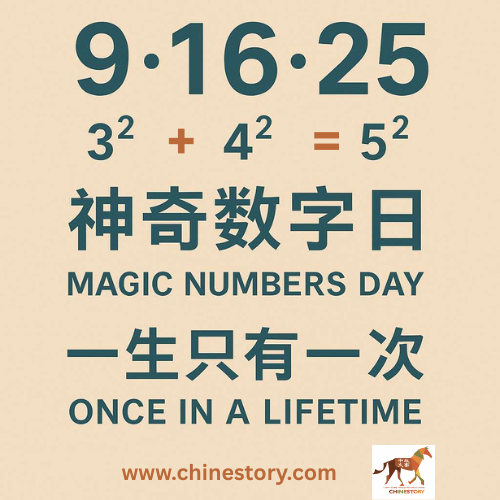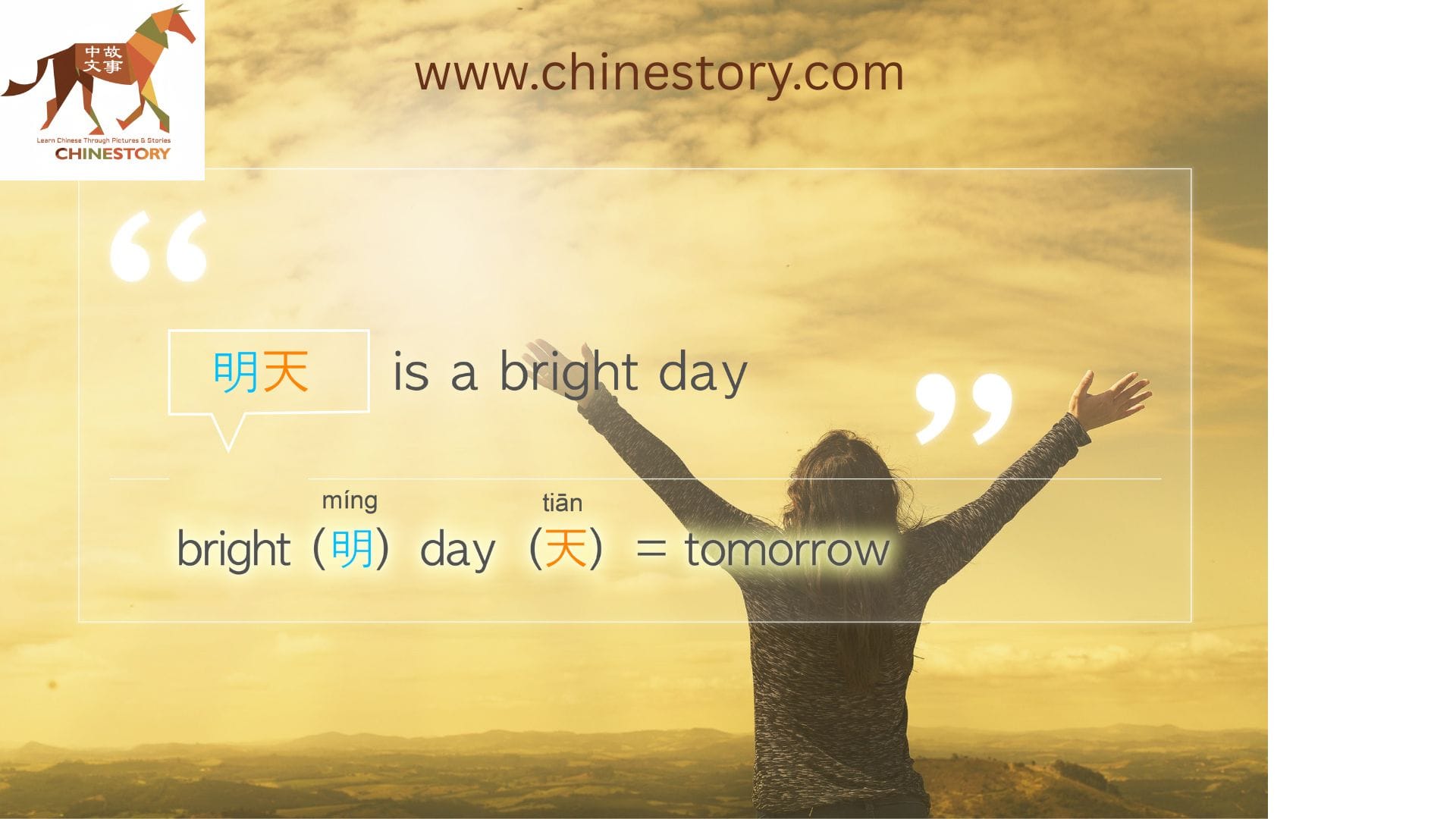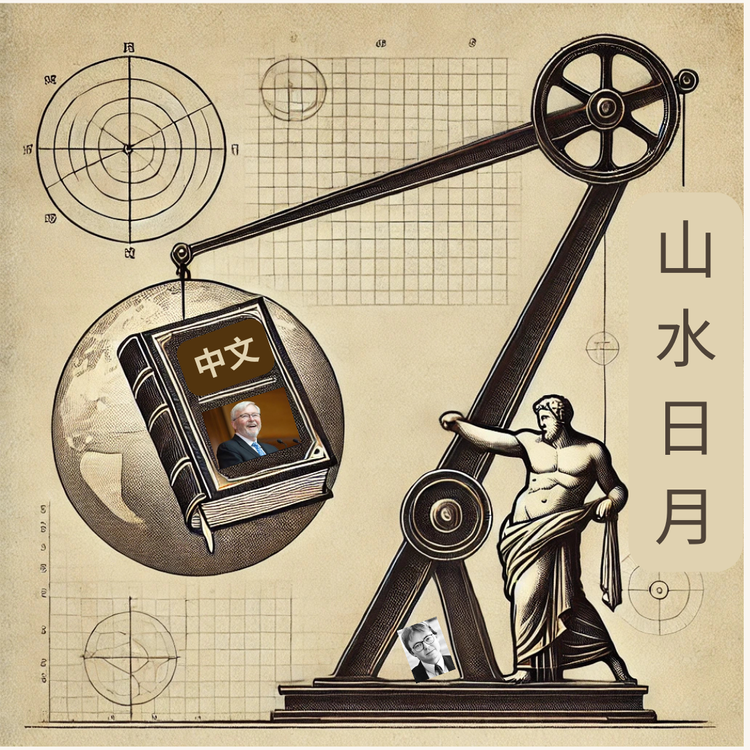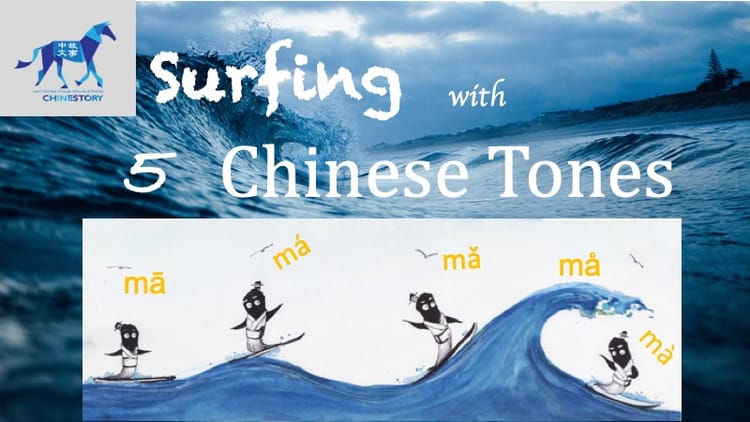Visual Patterns in Chinese Characters: From Pictographs like 日 and 月 to 明天

How to remember Chinese characters? The answer may be closer to math than you think. Today is September 16, 2025. the date itself formed a rare Pythagorean triple (3² + 4² = 5²). A once-in-a-lifetime alignment:
- 9 = 3²
- 16 = 4²
- 25 = 5²
For one day only, the calendar itself becomes both an equation and a geometric truth — a pattern revealed, never to appear again in history.
Chinese characters work the same way: through visual patterns and meaning.
Chinese Language Speaks in Patterns Too
Chinese characters are not random squiggles. They are built from meaningful parts that tell a story. Many began as pictographs, simple sketches of physical objects in the world.
- 日 (rì, sun): a pictograph shaped like the sun with a heat spot in it.
- 月 (yuè, moon): a pictograph shaped like a crescent, a smiling moon.
- 人 (person): a pictograph of a person, standing upright.
From these three pictographs, you can already pick the low-hanging fruits that give more bang for your buck:
- 日 (sun) + 月 (moon) = 明 (bright).
When the sun and moon shine together in the sky, it is bright. - 人 (person) stretches arms(shaped like 一) wide = 大 (big).
- 大 (big guy) with a line above = 天 (sky, day).
No matter how big(大) or strong a person(人) is, the sky(天) is always above. - a dot beneath 大(big) indicates too big = 太 (too/so)
- 天 marks the cycle of day and night.
Together, 明(bright)天 (day) = tomorrow — a day filled with optimism.

Learn 1, Know 10 In Action
From just three simple pictographs — 人 (person), 日 (sun), 月 (moon) — larger language units can be built:
more characters, as shown above:
- 人 → 大 → 天 → 太: person → big → sky→ too/so.
more phrases:
- 日 + 月 = 明: sun + moon = bright.
- 明(bright)天 (day) = tomorrow.
- 一日, 二日, 三日 → one day, two days, three days.
- 一月, 二月, 三月 → January, February, March.
Even a sentence:
- 天太大。→The sky is so big. (Yes! That's a full sentence.)
It is already self-demonstrating: the power of learning Chinese through visual patterns and meaning.
A Lesson Beyond Numbers and Words
Whether in math or language, the deeper message is the same:
No noise.
No forcing.
No memorization.
Just patterns that stick.
True learning is not memorization, but memory.
Patterns make memory stay because they reveal both meaning and beauty.
An Invitation
Moments like this very day - 9/16/2025 remind us of the wonder hidden in everyday life. Patterns are always there, quietly waiting to be discovered.
If this way of seeing resonates with you, I’ll be sharing more reflections and stories here. 📬 Subscribe to my newsletter to receive them directly in your inbox.





Comments ()